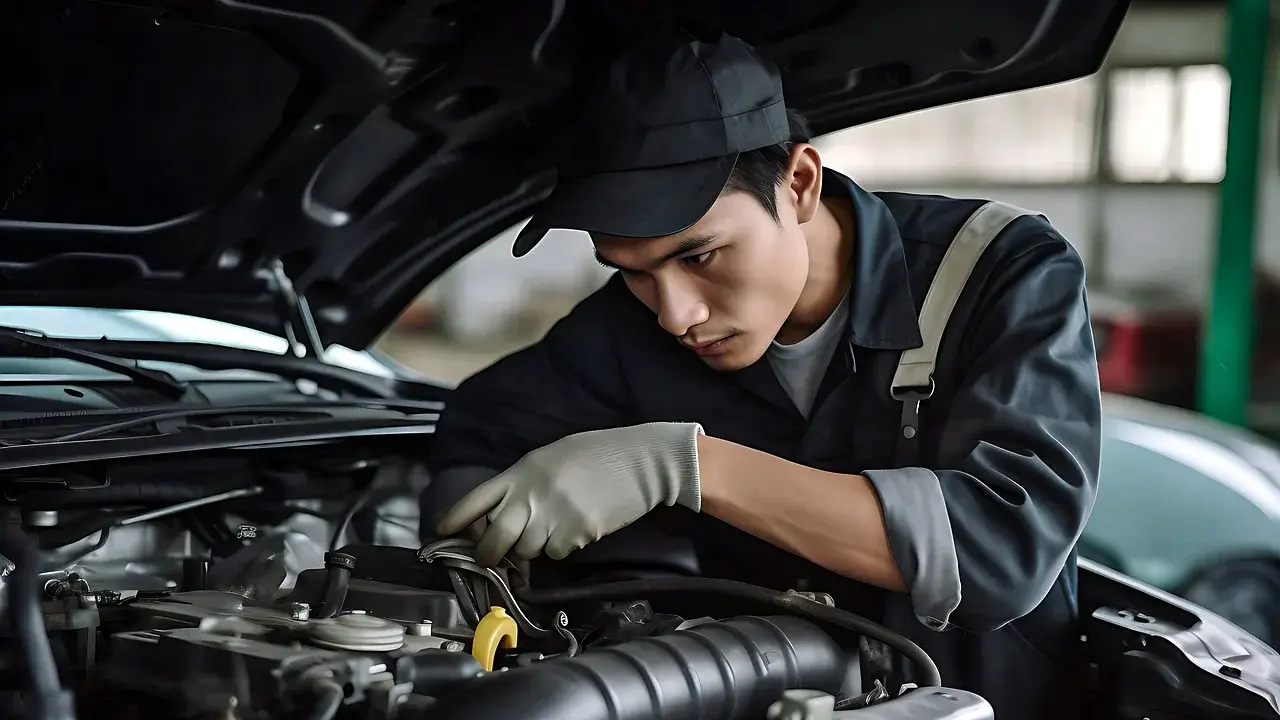Regular Oil Changes
One of the most vital auto maintenance chores is changing the oil in your vehicle. It avoids damage and maintains the engine’s smooth operation. The recommended oil change interval, typically every 3,000 to 7,500 miles, may be found in your car’s manual. To accomplish this, use a jack to raise your automobile, drain the old oil, change the filter, and put in new oil. Make sure to dispose of the used oil correctly.
Replace Air Filters
Unclean air filters can have a detrimental effect on engine performance and fuel efficiency. The process of changing the air filter is easy and reasonably priced. Check it between 12,000 and 15,000 miles. All you have to do is find the air filter box, open it, and replace the old filter.
Check Tire Pressure
The handling and fuel efficiency of your vehicle can be impacted by tires with inadequate pressure. At least once every month, check the tire pressure. Make sure every tire is inflated to the recommended PSI by using a tire gauge. As needed, inflate or deflate. Your tires’ lifespan can be increased by performing this easy task.
Rotate Tires
Your tires will last longer if you rotate them to promote even wear. The majority of automakers advise changing tires every 6,000 to 8,000 miles. You can use a jack and lug wrench to accomplish this on your own. Ensure the tires are torqued correctly before replacing the front tires with the rear ones.
Replace Windshield Wipers
Rotating your tires will help them wear evenly and last longer. Most automakers recommend changing tires every 6,000 to 8,000 miles. You can do this yourself using a jack and lug wrench.
Change Cabin Air Filter
The cabin air filter in your automobile keeps the air inside your car fresh and clean. It retains allergies, dust, and grime. It usually has to be replaced every 15,000 to 30,000 miles. Locate the filter (usually below the glove box), take out the old one, and put the new one in place.
Check and Replace Spark Plugs
Spark plugs are essential to the combustion process in your engine. If your car has fallen out, it may misfire or not start. Every 30,000 miles, spark plugs should be checked. If they seem worn, replace them by removing the old ones using a spark plug socket and then putting the new ones in.
Inspect Brake Pads
Brake pads are essential for driving safely. To prevent mishaps, check their condition regularly. It might be necessary to change your brake pads if you hear grinding or squeaking. By pulling the tire out, you may check the thickness of the brake pads. Change them out if they are too thin.
Check Fluid Levels
Make sure the fluids in your automobile are in the right amounts. These consist of transmission fluid, power steering fluid, coolant, brake fluid, and engine oil. Low fluid levels can damage your brakes or engine. These fluids can be analyzed with transparent reservoirs or dipsticks. Put the right kind of fluid in a low fluid.
Clean Battery Terminals
The starting problem may be a rusted or filthy battery. Every few months, clean the terminals on your batteries. Disconnect the positive terminal after disconnecting the negative one. After cleaning the terminals with a baking soda and water solution, use a wire brush to remove any corrosion.
Inspect Belts and Hoses
The belts and hoses in your car keep the engine in good operating condition. Regularly inspect them for leaks, fraying, and cracks. Before they break, replace them if you notice any wear. You may avoid future expensive repairs by doing this.
Change Fuel Filter
Engine performance may suffer from a clogged gasoline filter. Replacing it will boost fuel efficiency and prevent engine misfires. Generally speaking, a fuel filter is changed every 20,000–40,000 miles. Follow the handbook’s instructions to locate it and replace it.
- Audi GT50 Concept: A Loud Reminder of Why Car Enthusiasts Fell in Love With Audi
- Nearly 30% of UK Drivers Believe Car Tax Should Be Based on Mileage — Survey
- Why Planes and Boats Escaped the Luxury Tax But Cars Didn’t
- Australia’s Headlight Confusion: Authorities Warn Drivers After Viral $250 Headlight Rule Goes Wild Online
- 2025 Hyundai Venue Facelift Launched in India – Full Details, Variants, and Price
Clean and Protect the Exterior
It is also critical to keep your car looking nice. To avoid accumulation of dirt and grime, wash it frequently. Waxing a vehicle every few months can stop the paint from peeling or degrading. Ensure a glossy surface and prevent scratches by using a microfiber cloth.
